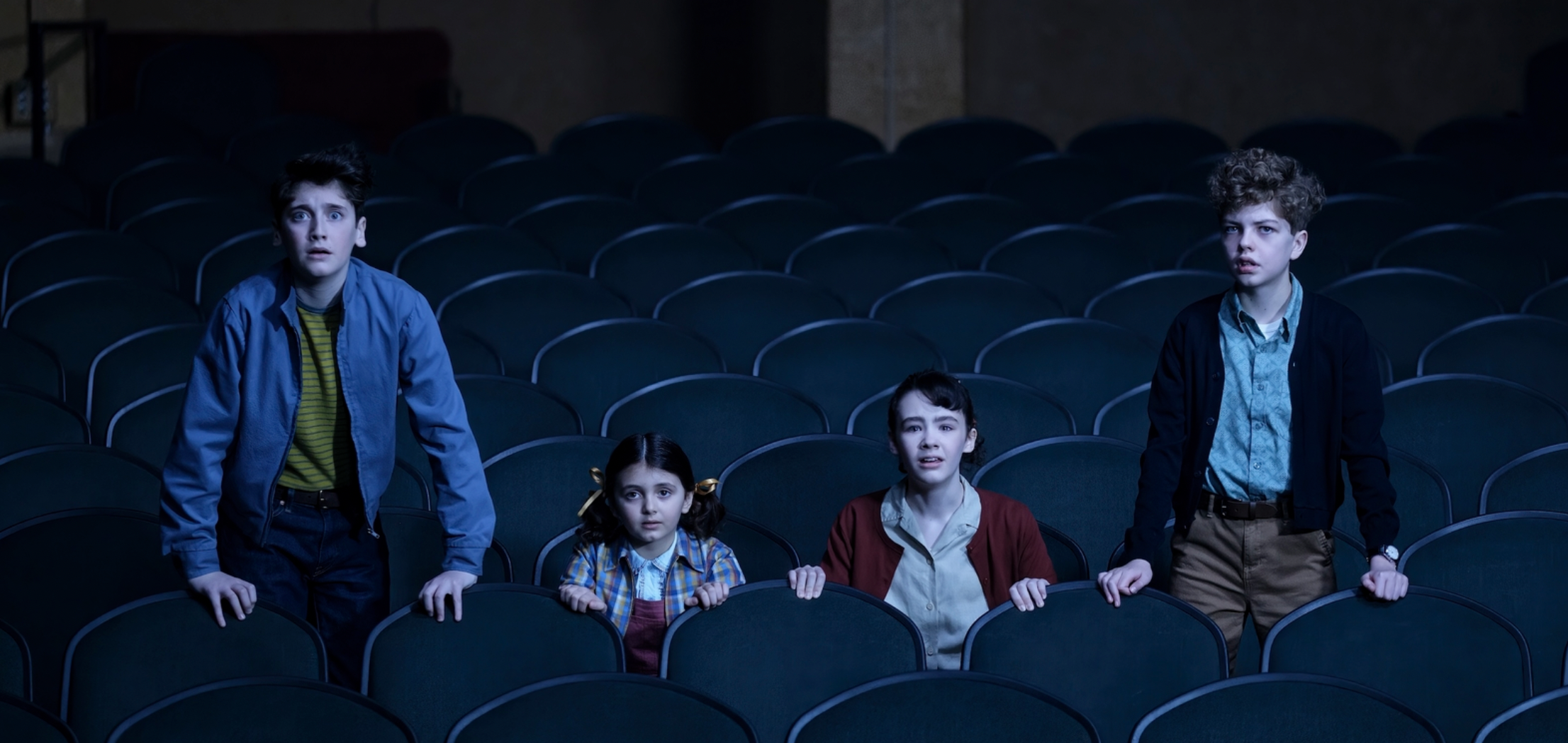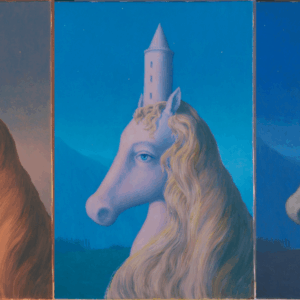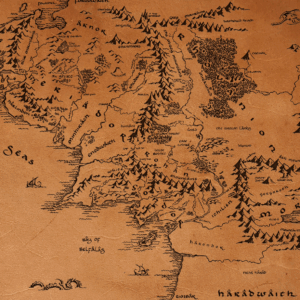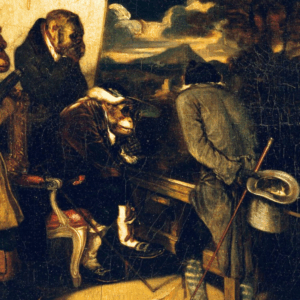
Bestsellers to Blockbusters: Stephen King Reflects on the Adaptations of His Work
“I see film and books as apples and oranges. Both are fruits, but the taste is remarkably different.”
In 2025, four of my novels and two short stories were adapted either for films or as streaming TV shows. I find this befuddling, perplexing, and downright peculiar. Also—okay, yeah—pretty cool.
Part of the reason lies in the startling success of Andy Muschietti’s film version of my novel, It. The breakthrough of the movie owes a lot to the inspired performance of Bill Skarsgard as the murderous dancing clown. Pennywise has now joined Freddy, Jason, and Michael Myers in the pantheon of modern-day boogeymen. Whatever else this talented actor may do, Skarsgard will carry that clown’s legacy—and burden—for the rest of his career.
The budget of It was a modest $30 million. That New Line—who inherited the project from Warners—expected similarly modest returns seems clear from their decision to hire Muschietti, whose previous film (Mama) was budgeted at about $15 million and was co-written by Barbara Muschietti, the director’s sister. Also, New Line dropped it after Labor Day, which is generally considered to be a dead spot on the release calendar, second only to February and March.
We were all exposed to stories on movie screens or TV sets before we could read, and first impressions are lasting impressions.
What nobody counted on—least of all me—was the fact that an entire generation, now old enough to attend an R-rated film, had been traumatized as children by Tim Curry, who played Pennywise the Dancing Clown in an ABC-TV miniseries (budget: a measly $12 million). That mini, directed by Tommy Lee Wallace, was a ratings and critical success, somehow skirting the unwritten TV censorship rule that stated, “Thou shalt not put thy characters under the age of 14 in mortal jeopardy.” Tim Curry was great as Pennywise, giving children across America (and perhaps the rest of the world) reason to fear the offer of a red balloon and the promise, “We all float down here.”
Those kids—now grownups—were anxious to revisit the terror they felt as kids. Hey, weird nostalgia is still nostalgia. Many of them brought their own children to be terrorized by the new Pennywise, a character that was originally conceived in a Boulder, Colorado park while I was walking across a wooden bridge and musing about trolls.
The success of It, with its scary clown, no doubt caused writers, directors, and producers to hope for a similar jackpot. They got at least one with the Terrifier movies, featuring Art the Clown (played by David Howard Thornton). There’s also the simple fact that horror films have a high success rate, particularly in times of turmoil. Folks like make-believe scares before facing the real-life horror of grocery store prices.
The success of It does not fully explain all the other adaptations of films and TV programs based on my work. There have been over 100, if such TV series as Haven and The Dead Zone are included. There have also been three marvelous TV series based on the Bill Hodges books: Mr. Mercedes, Finders Keepers, and End of Watch. Those appeared on the Audience streaming service, owned by AT&T. Bill Hodges was played by Brendan Gleeson, Holly Gibney by Justine Lupe.
Jack Bender, a veteran of Lost and the driving force behind this summer’s The Institute (one of the best screen versions of my work, with a narrative of harsh and simple clarity), created the Mercedes trilogy and directed the pivotal episodes. David Kelly and Dennis Lehane wrote for the show. Gleeson and Lupe were terrific, the scripts were smart, the directing was excellent, but the audience never came. If It was a stadium rock show, the three Hodges series played acoustic guitar in a coffee house. (They are now available on Peacock.)
Bill Thompson, my first editor, once said, “Steve King has a projector in his head.” There’s some truth to that, but the same can be said for almost every writer of fiction now alive. We were all exposed to stories on movie screens or TV sets before we could read, and first impressions are lasting impressions. One sees admirable narrative drive in writers like Thomas Hardy, Charles Dickens, Jane Austen, and Joseph Conrad, who did their work without the benefit of motion pictures, and as a result don’t have the same clarity of vision. The stories are there, but the imagistic quality of novels written in the 20th and 21st centuries is not.
Movies are a team sport. When I write stories, it’s just me and my keyboard against the world.
Every writer moves by fits and jerks; there are remarkably few cases of a slow and steady upward trend to what musician Al Kooper once called “that quantum leap to palatability.” Of Bob Dylan, singer-poet Patti Smith once said, “He was just another folk singer, but when he came back [on the bus from Minnesota] he was Bob Dylan.”
I was just another horror-writing wannabe when I got to college, but one of those growth spurts happened while I was in a poetry seminar, where I fell under the influence of poets like William Carlos Williams, whose famous dictum was “No ideas but in things.” I was never much of a poet (although I tried hard), but Williams’s advice spoke to me. Thus, characters in my stories never swing open a medicine cabinet and see generic aspirin—they see Excedrin or Anacin. They never open the fridge and grab a beer, they grab a Bud or a PBR.
I think it was this clarity that appealed to directors as varied as Brian DePalma, Stanley Kubrick, Frank Darabont, Jack Bender, and Mike Flanagan. They see what I wrote and want to put it on the screen. When I talk to young writers, I tell them that when they visualize a scene, the most important thing is to see what’s on the left and what’s on the right. If you’re doing your job, all the stuff in the middle takes care of itself.
One other thing has made me quite adaptable. I rarely meddle in the filmmaking process. I see film and books as apples and oranges. Both are fruits, but the taste is remarkably different.
A young interviewer once moaned to James M. Cain about how the movies had ruined his books. Cain laughed and gestured to the shelf behind him. “No, they didn’t,” he said. “They’re all up there.”
I send my books off to be filmed the way parents send their kids off to college, hoping they’ll do well and not fall into any of the pits and snares along the way (drugs, booze, toxic relationships, elevator cramming, goldfish swallowing). I offer advice when asked. Otherwise, I just shut my mouth and hope for the best, knowing that my books—good, bad, indifferent—are still all up there on the shelf. I like it that way. Movies are a team sport. When I write stories, it’s just me and my keyboard against the world.
All images courtesy of Warner Bros. Discovery
Stephen King
Stephen King is the author of more than sixty books, all of them worldwide bestsellers. His recent work includes Never Flinch, the short story collection You Like It Darker (a New York Times Book Review top ten horror book of 2024), Holly (a New York Times Notable Book of 2023), Fairy Tale, Billy Summers, If It Bleeds, The Institute, Elevation, The Outsider, Sleeping Beauties (cowritten with his son Owen King), and the Bill Hodges trilogy: End of Watch, Finders Keepers, and Mr. Mercedes (an Edgar Award winner for Best Novel and a television series streaming on Peacock). His novel 11/22/63 was named a top ten book of 2011 by The New York Times Book Review and won the Los Angeles Times Book Prize for Mystery/Thriller. His epic works The Dark Tower, It, Pet Sematary, Doctor Sleep, and Firestarter are the basis for major motion pictures, with It now the highest-grossing horror film of all time. He is the recipient of the 2020 Audio Publishers Association Lifetime Achievement Award, the 2018 PEN America Literary Service Award, the 2014 National Medal of Arts, and the 2003 National Book Foundation Medal for Distinguished Contribution to American Letters. He lives in Bangor, Maine, with his wife, novelist Tabitha King.












